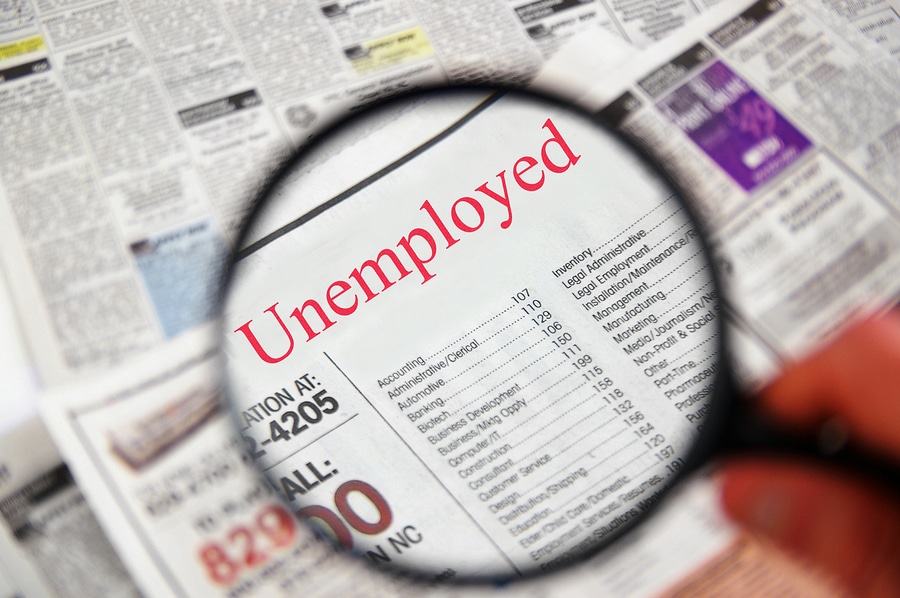Wall Street just got hit hard. Main Street could be next.
President Donald Trump’s massive tariff hike last week sent markets into a sharp decline. In two days, more than $6 trillion was wiped out from equity markets.

Though a recession isn’t guaranteed at this point, the market turmoil has economists and market analysts revising their economic outlooks and boosting the risk of a downturn. The question now is how could market turbulence spill over into the economy?
Consumer spending, which accounts for nearly 70% of U.S. economic growth, and the labor market are two areas where the effects of trade strife will be critical in determining the economic outlook. So far, the economic data is showing stable conditions, but there are indicators to watch for weakness in the coming weeks.
No Spending Slowdown Yet
Half of U.S. consumer spending is driven by the highest-earning 10% of Americans —those making about $250,000 or more annually. That’s important in assessing the health of the economy, since the so-called “wealth effect” has been a driver of economic growth in recent years.
The explosion of growth in financial assets—driven by back-to-back gains of over 20% for the S&P 500 index in 2023 and 2024—and soaring real estate values have boosted consumer health.
That means a market downturn poses a risk to consumer spending. For lower-income households, tariffs will act as a tax on imported goods and drive prices higher. That will crimp household spending and business investment.
So far, consumer spending is relatively solid at the end of the first quarter. For example, the Johnson Redbook Index, a weekly proprietary retail sales index, increased by 4.8% year over year in the week ending March 29. “That is currently well-behaved, no signs of consumer spending slowing down on that front,” says Torsten Sløk, chief economist at Apollo Global Management. Debit- and credit-card spending has also been holding up. Weekly attendance at Broadway shows, which typically draws in a higher-income crowd, and hotel occupancy levels remain solid.
Other spending indicators that Slok watches, such as restaurant reservations and TSA air travel data, have been slightly weaker, but nothing too concerning.
“There are a few signs here and there that things might get a little weaker, but the core indicators used to discuss the economic outlook are still holding up quite nicely. At the moment, it’s a little bit of a storm in a teacup by markets, since the data hasn’t shown much signs of a slowdown” Slok says.
Employment Conditions Remain Key
Trump’s tariff hikes could not only spoil spending, but higher operating costs derived from the higher levies could also translate into job losses if employers pull back.
Bottom line, if people aren’t employed, they can’t spend—which could be another way economic growth will contract. So far, the so-called soft sentiment data has been negative. There has been a reversal in corporate capital expenditure plans in recent months and corporate confidence has slumped since the start of the year.
The data on employment conditions are more mixed. WARN notices—the 60-day notification of planned layoffs required of employers with more than 100 employees—have risen. According to non-seasonally adjusted data collected by Cleveland Fed researchers, there was a 19% month-to-month jump in WARN filings in February.
U.S. employers announced 275,240 job cuts in March, a 60% increase from February, according to placement firm Challenger, Gray & Christmas. Though the firm noted that most stem from Department of Government Efficiency cuts, some of which have been stalled by legal challenges.
So far, the layoff and discharge rate has remained steady since October, according to the latest data from the Job Openings and Labor Turnover Survey. And the number of Americans filing for unemployment benefits has also remained relatively unchanged.
Overall U.S. employment has been stable during the first quarter, with employers delivering blowout payroll gains of 228,000 last month, according to the latest data released by the Bureau of Labor Statistics on Friday.
But while employers may have had some momentum in March, Huntington Bank’s Chief Economist Olu Omodunbi says he will be watching the guidance that comes out of the coming earnings season that kicks off on Friday. He puts the odds of the U.S. entering a recession in 2025 at about 50%.
The downside risk to the U.S. economy is intensifying, but the size of the economic risks, at this point, depends on the duration and magnitude of this shock, Slok says.
Brian Gardner, Stifel’s chief Washington policy strategist, says that negotiations of trade deals is a “likely outcome.” But agreements with countries like Vietnam and Cambodia “won’t move the needle economically.” Instead, it will come down to how negotiations with large economies like China and Europe proceed—and that will take time, Gardner says.
In the interim, economists aren’t the only ones who will be reading the tea leaves among the incoming spending and employment indicators.
Read the full article HERE.


